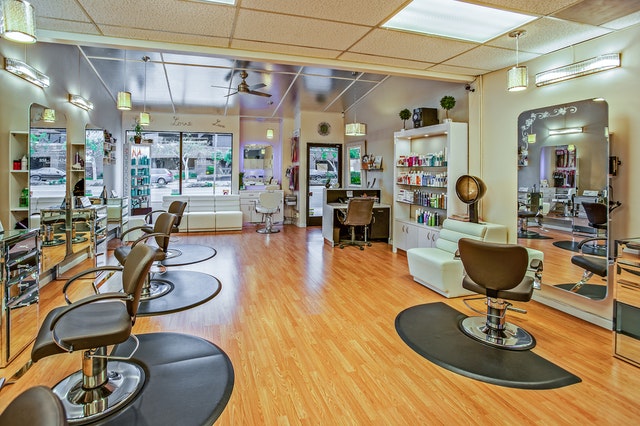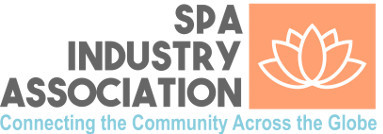
When it comes to running a successful salon business, your success will depend on nurturing great relationships with your clients. Not only current clients but prospective ones, too. Knowing what to avoid when opening a salon is important, but knowing what to implement is equally as vital.
To attract new business and retain your existing clients, you need to build a good rapport and compellingly communicate your value. What’s the easiest way to do this in 2022? Email marketing.
In this post, we’ll explain the benefits of email and how you can craft compelling and convincing emails that will allow you to nail your salon marketing.
What Is Email Marketing?
Put simply, email marketing is the use of email to promote products or services. It can also be used to keep customers informed, communicate brand messaging, and encourage brand loyalty. It’s estimated that there will be 4.6 billion email users in 2025, making up half of the expected world population.
Why Use Email Marketing for Your Salon?
Email marketing is an essential way for salon owners to market their business.
Why use email marketing for your salon? Because when it’s done well, it works. Each pound you spend on email marketing returns an average of £42. The ROI for email marketing has increased each year and shows no sign of slowing. This success isn’t limited to service-based communications. The conversion rate ecommerce stores experience as a result of email marketing is also significantly higher than other channels.
This offers future opportunities to introduce retail sales in your salon communications.
You also own your own data with an email list. Unlike social media, television, or radio, there’s no external entity that can impact how, when, or why you advertise.
How to Craft an Email That Can Convert
Consider that each of your customers receives around 121 emails daily. Out of 121 emails, would you want to open the last marketing email you sent?
As more customers look to stop email overload, without a defined, tried-and-tested strategy, your communications may go straight to junk.
With that being said, once you’ve nailed down your strategy, it’s easy to build and send emails that people actually want to read. Start with the following:
1. Define Your Audience
The easiest way to make a potential customer open an email is by making it relevant. If you’re looking to advertise a summer sale for 50% off acrylic nails or a free infill appointment if booking in March, do you need to send that to the men who’ve come in for a beard trim?
Start with your buyer persona, understand what they want, and tailor your campaign to your audience’s needs. Relevant customer emails mean higher open rates, improved customer satisfaction, and a lower unsubscribe rate.
2. Establish Your Goals
Before you come up with your campaign goals, gather context. Research the email stats for your industry and use them as benchmarks. The benchmark for hotels’ email click-through rate will vary wildly from an online ecommerce store, and with good reason. The average email open rate is 17.1% for the health and beauty industry – aim for this as your starting point.
When you know your goals, you can easily decide on the types of emails you want to send.
3. Create a Way for People to Sign Up
Unless you already have an established email list, you’ll need to build one. An email list is simply a group of users who have permitted you to contact them. To build this list, you’ll need several ways for people to opt in to receive your emails. This may be from booking appointments, entering giveaways, or joining waitlists.
4. Make a Schedule
Decide how often you plan to contact your list and stick to a consistent schedule. This not only builds trust but ensures that your subscribers don’t forget about you. With that being said, don’t go too crazy on frequency. 78% of consumers have unsubscribed from lists because a brand sent too many emails.
Best Practice for Emails
We now know what email marketing is and how to go about devising an email marketing strategy. To use it to maximize potential returns, it’s vital to follow tried-and-tested best practices. These include:
- Use an Email Marketing Service
You’ll be glad to know that long gone are the days of manually inputting emails into Outlook. Several tools on the market allow you to efficiently create, personalize, and optimize marketing emails that feel and look professional. These can be used to set up, send, and analyze the success of your email marketing to allow you to get the best results.
- Learn About Email Marketing
When was the last time you gave a second thought to the subject line of an email? Or the formatting? In email marketing, everything from the time you send your email to the number of emojis in the subject line matters. Familiarize yourself with the following components of an email:
Copy: the body copy of your email should be succinct and consistent with your brand tone of voice.
Artwork: choose relevant artwork that is optimized for all devices. It is expected that by 2023, 372 billion emails will be sent and received each day, and most will be opened on a mobile. If your emails aren’t set up to display properly on a mobile device, you’re losing a large portion of your market.
Subject line: use clear, actionable, enticing language that is personalized. It needs to stand out from over 100 other emails in the inbox. Think carefully about how to do this.
- Implement Segmentation and Personalize your Emails
Segmentation involves breaking up your email list into subcategories of characteristics, interests, or preferences. The more you divide your list, the more relevant you can be with your messaging, and the easier it’ll be to convert.
This can be further helped by sending emails with personalization. Personalized emails have significantly higher open rates and improved click-through rates compared to others. You can do this in many ways. For example, you could do something as simple as adding a name in a subject line to targeted product recommendations. Modern email newsletter design is often optimized for adding in personalized touches easily.
Avoid Spam Filters
Having spent time creating the perfect email that can convert, the last thing you want is to end up in a junk folder. Ending up here not only hurts your deliverability rates, but your contacts will miss most of your emails. How often do you check what’s lurking in your junk folder?
You can avoid ending up in junk mail by familiarizing yourself with triggers for spam filters. These include words with urgent connotations such as “buy now,” “book now,” “clearance,” or “great offer.”
7 Creative Ideas for Email Content That Wins
With a market as saturated as health and beauty, standing out as a salon owner involves being creative and unique, with content that speaks to the consumer.
No two audiences are the same, and you’ll learn quickly what your own subscribers respond to and what they don’t. Marketeers typically approach content in a different way to consumers, and it’s important to keep the buyer in mind at all times during the process.
- Thank Your Clients
Possibly the easiest email to start with, the post-purchase thank you. This isn’t a conversion-driven email in the conventional sense. There’s no sale to come from it. There’s no immediate revenue generation. However, if a client has already received a service from your salon, they’re more likely to engage with your communications. This is an easy way to collate evidence of customer satisfaction and utilize it to build social proof.
- Celebrate Special Occasions
We’ve referenced the power of personalization previously, and it’s important to recognize the potential of a simple birthday email. By collating this data when creating your email list, you can open up opportunities in the future to target your customers on special days.
If you don’t have this data, consider sending emails on the anniversary of their appointment at the salon. This has been utilized in other industries, for example, internet service providers, such as OnlyDomains, who celebrate renewals.
- Weekly Newsletters
Depending on the service you’re offering, you may only be able to sell to a customer every six to eight weeks – what can you communicate to them in between those appointments that will keep them engaged? Consider educational or informative newsletters with tips, tricks, or insider secrets. Guides, such as how to have a relaxing spa day at home, will ensure customers don’t forget about you between appointments.
- Raise Awareness of New Products
While someone may have been a customer previously, they may not be aware of the entire range of services you offer. Consider sometimes advertising some of the more obscure services or customer service techniques and the benefits they provide. You may be surprised at the interest it generates.
- We Miss You!
Not seen a client in a while? Don’t fret. “We miss you!” emails are a wonderful tool for re-engaging previous clients. Think of creative ways to do this. If you’re a hair salon, can you show the average length of re-growth in the time since their last appointment? This may be just enough to get someone in the back appointment book.
- Go Interactive
Think engaging. Reports have shown that emails containing videos can increase click rates by 300%. Consider creating GIFs or short-form videos to entertain your clients. These can also be used on social media for business growth.
- Discounts, Discounts, Discounts
It goes without saying that everyone loves a discount or offer. Everyone wants to feel like they’re saving money. Consider communicating regular discounts or offer periods to re-engage lapsed clients. It’s amazing what a few dollars off a service can do to secure a sale.
Bio:
Jessica Day – Senior Director, Marketing Strategy, Dialpad
Jessica Day is the Senior Director for Marketing Strategy at Dialpad, a modern business communications platform that takes every kind of conversation to the next level—turning conversations into opportunities. Jessica is an expert in collaborating with multifunctional teams to execute and optimize marketing efforts, for both company and client campaigns. She has also written for sites: Lucky Orange and Trans4Mind. Here is her LinkedIn.




